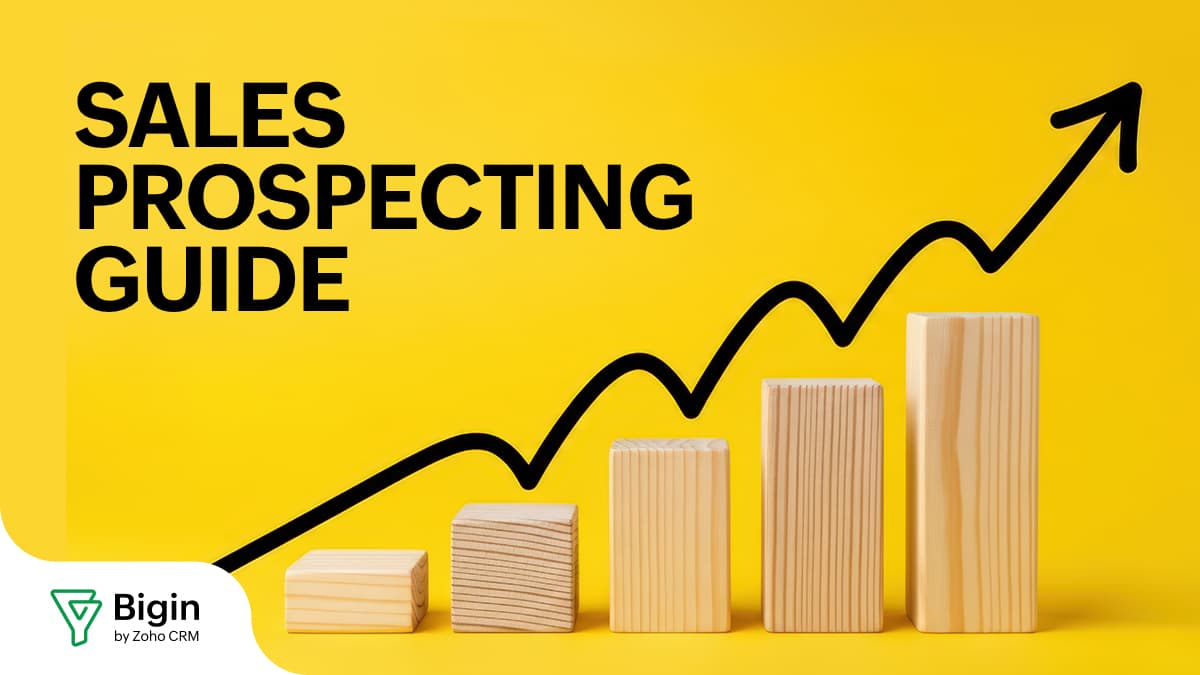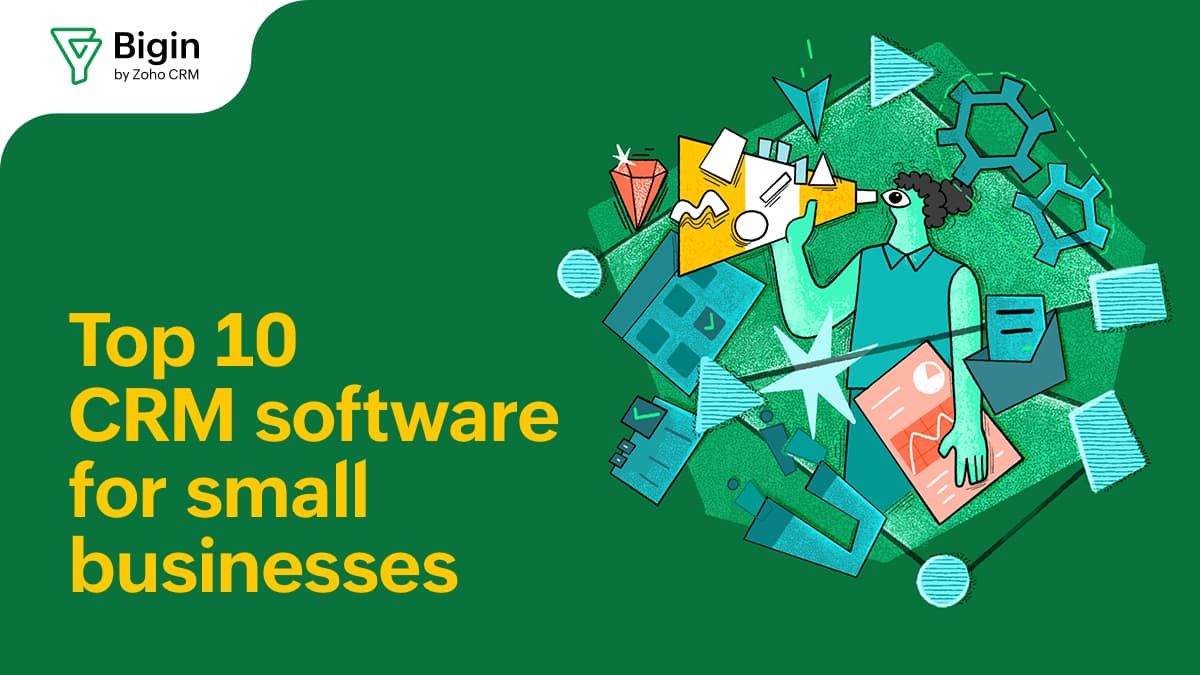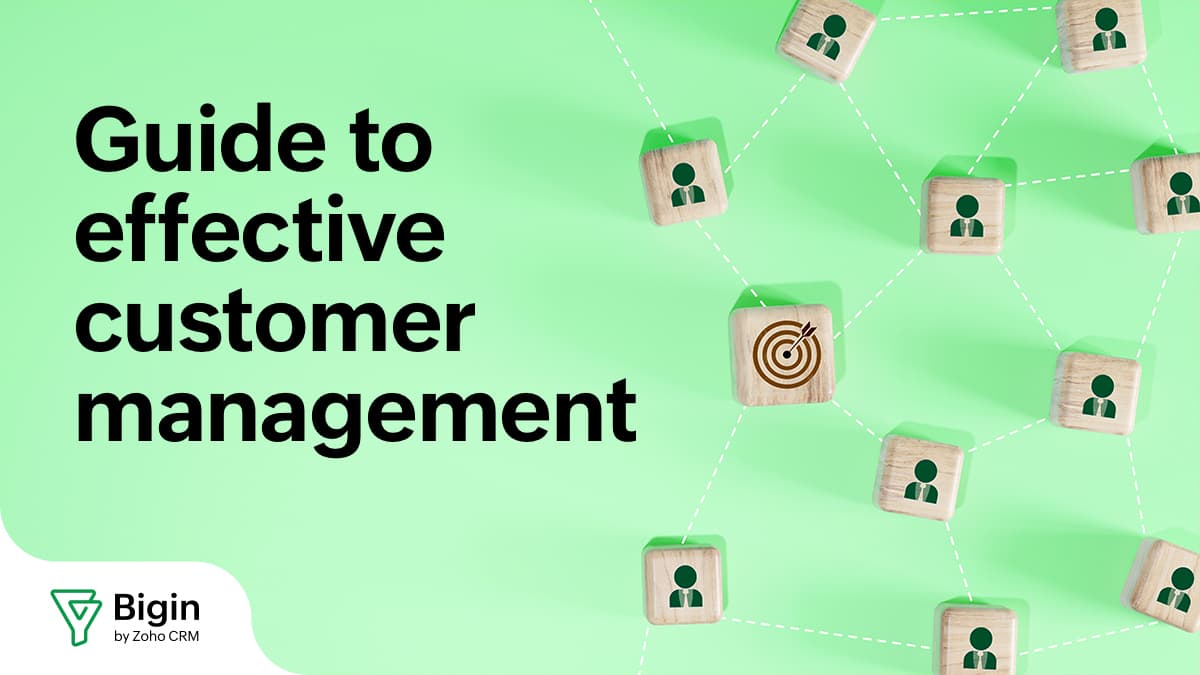The ultimate guide to sales prospecting
- Published : October 17, 2025
- Last Updated : October 17, 2025
- 109 Views
- 7 Min Read

Every business—no matter its size—survives on one thing: a steady stream of new customers. But finding those customers is no easy task; one needs to know where to look and how to start a conversation that actually goes somewhere. That's where sales prospecting comes in.
At its core, prospecting is about identifying the right people, understanding their needs, and figuring out how your product or service can genuinely help them. It's not the same as lead generation or marketing outreach; it's more personal, more deliberate, and, often, more rewarding.
In this guide, we'll unpack what sales prospecting really means, how it differs from lead generation, and the strategies that can make your outreach efforts more effective. Whether you're just starting out in sales or looking to sharpen your team's process, this will help you approach prospecting with more clarity—and a better chance of turning conversations into customers.
What is sales prospecting?
Sales prospecting is the strategic process of identifying and reaching out to potential customers who align with your ideal buyer profile. This critical activity involves researching, qualifying, and initiating contact with individuals or businesses that could benefit from your products or services. Without a steady stream of qualified prospects, your revenue growth stagnates.
But prospecting extends beyond simply collecting names and contact information. It requires sales professionals to evaluate whether a potential customer has the need, budget, authority, and timeline to make a purchase. This evaluation distinguishes casual browsers from serious buyers, which enables your team to focus its energy where it matters most.
Prospecting in sales typically involves multiple touchpoints across various channels. A sales representative might discover a potential customer on LinkedIn, send a personalized email, follow up with a phone call, and share relevant content before discussing pricing. Each interaction builds familiarity and trust and moves the prospect closer to a purchasing decision. Companies that excel at prospecting consistently outperform competitors because they maintain a healthy flow of opportunities.
The difference between sales prospecting and lead generation
Many sales and marketing professionals use these terms interchangeably, yet they represent distinct approaches to finding customers. Understanding the nuances helps organizations allocate resources effectively.
The main difference between lead generation and prospecting boils down to methodology and ownership. Lead generation typically falls under marketing's responsibility. Marketing teams create content, run advertising campaigns, and design website experiences that attract potential customers. When someone downloads an ebook or requests a demo, they become a lead. This approach casts a wide net that captures anyone who shows interest.
Marketing then qualifies these leads using scoring models that evaluate factors like job title, company size, and engagement level. Once a lead reaches a certain threshold, marketing passes them to sales. This process operates at scale; one webinar might generate hundreds of leads with minimal manual effort.
Sales prospecting works differently;it's a more targeted, hands-on approach that's managed by the sales team. Instead of waiting for interest, sales professionals actively seek out specific individuals or companies that match their ideal customer profile. A sales development representative might spend hours researching a prospect's company and crafting personalized outreach. This one-to-one engagement requires significantly more time per contact.
The distinction between a lead and prospect matters here. A lead is anyone who has shown some level of interest in your brand or fits your target demographic. A prospect, however, has been qualified as someone worth pursuing. All prospects are leads, but not all leads become prospects. Prospects meet specific criteria that indicate they're likely to purchase, such as having budget and decision-making authority and a pressing need for your solution.
How the sales prospecting process works
The sales prospecting process follows a methodical sequence designed to identify the right people and initiate meaningful conversations. Understanding each phase helps sales professionals work more efficiently and effectively.
Research forms the foundation of successful prospecting. Sales representatives dig into potential customers' backgrounds to examine their companies' mission, recent news, social media activity, and industry trends. For B2B prospecting, this might involve reviewing a prospect's LinkedIn profile to understand their role, reading their company's latest press releases, or analyzing their competitors. The goal is to uncover pain points, business priorities, and potential objections before making contact.
Not every potential customer deserves the same level of attention. Sales teams use lead scoring systems to rank prospects based on their likelihood to convert and potential lifetime value. Factors might include company size, industry, technology stack, recent funding rounds, or specific behaviors like visiting your pricing page multiple times. This prioritization ensures that sales representatives focus their limited time on the most promising opportunities.
After qualifying prospects, the outreach phase begins. This involves crafting personalized messages that demonstrate understanding of the prospect's situation and offer genuine value. Effective prospecting rarely starts with a hard sales pitch. Instead, sales professionals might share a relevant case study, offer insights about industry trends, or ask thoughtful questions about the prospect's current challenges.
The channel for outreach matters. Some prospects prefer email, others respond better to LinkedIn messages, and certain industries still value phone calls. Sales prospecting techniques adapt to prospect preferences; reaching out through their preferred channel increases response rates significantly.
Follow-up separates successful prospectors from those who struggle. Most prospects don't respond to initial outreach, but persistence pays off. Research indicates that it takes an average of nine contact attempts to connect with a prospect, yet most salespeople give up after four to six tries. Consistent, value-driven follow-up keeps you top of mind without becoming annoying.
Throughout this process, sales teams track every interaction in their customer relationship management system. This documentation helps team members coordinate efforts, understand prospect history, and refine their approach based on what works.
Tips for effective prospecting
Effective prospecting starts with building dedicated time into your schedule. Sales professionals who treat prospecting as an afterthought struggle to maintain pipeline health. Let's take a look at some ways to make your prospecting more effective:
Block specific hours each week exclusively for prospecting activities
During these sessions, eliminate distractions and focus solely on researching, reaching out, and following up with potential customers.
Leverage your existing network strategically
The easiest path to new customers often runs through current relationships. Ask satisfied clients for referrals, tap into your LinkedIn connections for warm introductions, and attend industry events where your ideal prospects gather. People buy from those they trust, and trust transfers through mutual connections.
Personalization dramatically improves response rates
Generic templates feel impersonal and get ignored. Take time to reference something specific about each prospect, whether it's a recent company announcement, a shared connection, or an insight from their social media activity. This demonstrates that you've done your homework and view them as an individual—not just another name on a list.
Finding new sales opportunities requires creativity and adaptability
Digital events, webinars, and online communities have become goldmines for prospecting. Hosting educational webinars positions your brand as an industry authority while filling your pipeline with engaged prospects. Participating in relevant online forums and groups helps you identify individuals actively seeking solutions to problems your product solves.
Segment your prospects based on shared characteristics like industry, company size, or pain points
Segmentation enables you to tailor your messaging and approach for each group. A small business owner faces different challenges than a Fortune 500 executive; your outreach should reflect that understanding.
Timing matters more than many sales professionals realize
Reaching out when your prospect's company just announced expansion plans or secured funding increases your chances of engagement. Set up alerts for news about target companies and industries so you can strike while the iron is hot.
Track your metrics religiously
Monitor your email open rates, response rates, and meeting conversion rates, as well as which channels drive the best results. Sales prospecting techniques that work for one audience might fall flat with another. Let data guide your strategy adjustments rather than relying on gut feelings.
Embrace the reality that prospecting is a numbers game
Rejection is inevitable; even top performers hear "no" far more often than "yes." Maintain consistent activity levels and focus on building genuine relationships rather than pushing for immediate closes. The prospects who aren't ready today might become customers six months from now if you've left a positive impression.
B2B prospecting vs. B2C prospecting
The distinctions between B2B and B2C prospecting shape every aspect of your sales approach, and require fundamentally different strategies.
B2B prospecting involves longer sales cycles and complex decision-making. Purchase decisions rarely rest with a single individual; you'll need buy-in from department heads, C-suite executives, procurement teams, and end-users. This reality demands extensive research: understanding company structures, identifying key decision-makers, mapping reporting relationships, and uncovering budget cycles. The stakes are higher, with substantial financial commitments and long-term contracts at play.
Outbound techniques thrive in B2B environments. Cold calling remains effective for business sales, alongside LinkedIn outreach, personalized email campaigns, and strategic networking at industry events.
B2C prospecting operates at a completely different pace and scale. Consumer purchases involve smaller dollar amounts, shorter consideration periods, and individual decision-makers. A consumer can discover and purchase your product within minutes, while B2B deals might take months to close.
Inbound marketing drives B2C success. Consumers research independently, compare options online, and prefer initiating contact themselves. Content marketing, social media, SEO, and paid advertising attract consumers who essentially self-qualify as leads. They prefer text messages, social media DMs, and chat interfaces over cold calls.
Value propositions diverge too. B2C emphasizes emotional benefits, convenience, and immediate gratification. B2B focuses on ROI, efficiency gains, and long-term strategic value that buyers must justify to others.
Some industries blur these lines. High-value B2C purchases, like insurance or real estate, use B2B-style techniques, while small business owners often behave like consumers, preferring independent research.
Understanding which model applies to your business enables you to develop prospecting techniques that resonate with your specific audience's expectations and buying behaviors.
Wrapping up
Sales prospecting is about building relationships with people who genuinely fit what you offer. It takes patience, research, and a thoughtful approach to communication. When you focus on understanding prospects and staying consistent with your outreach, you start seeing stronger connections and more predictable sales growth.
Keep refining your process, learn from every interaction, and use the right tools to make the work easier and more organized. Over time, those efforts create a steady, sustainable pipeline that drives your business forward.
 Anubhav
AnubhavAnubhav is a product marketer with an insatiable thirst for all things content marketing, technology, and SaaS. His expertise lies in crafting compelling narratives that resonate with audiences and drive business growth. With a deep-rooted interest in entrepreneurship, Anubhav closely follows the latest industry trends and innovations, constantly seeking new ways to elevate marketing strategies.


